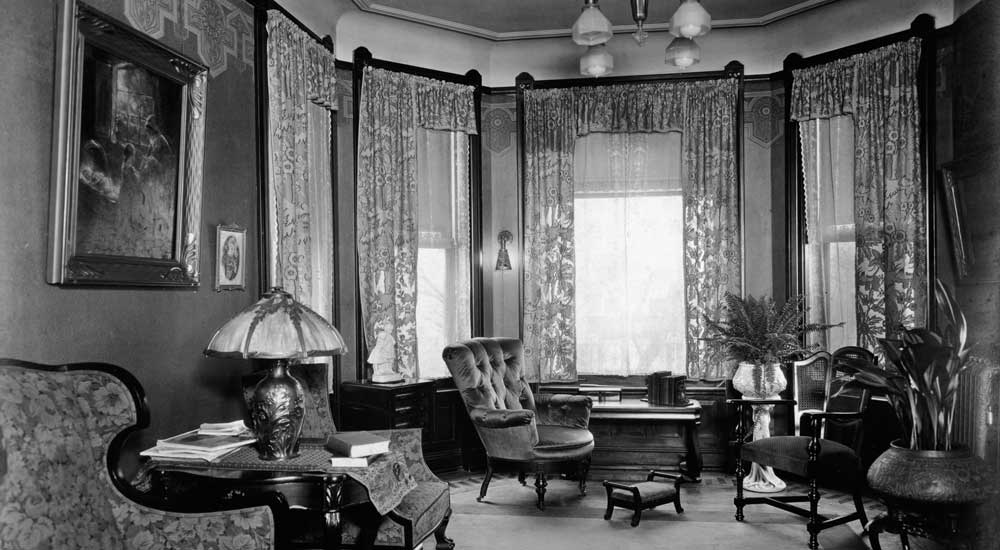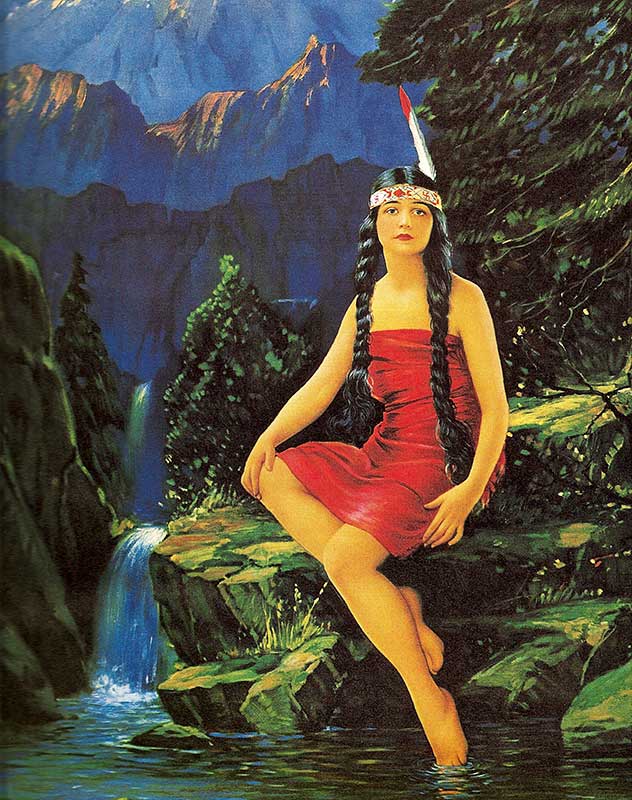The headband shown in "Yellow Bird" by Rudolph Ingerle (1879-1950) closely resembles Tonnesen's headband. Artists working from photos had the option of painting over photographic details, altering them, or leaving them unchanged. This one may be a slightly altered presentation of the same headband.
However, I've always felt that Tonnesen was responsible for many more of the posed photographs of beautiful women dressed as Native Americans and illustrated by the nation's top calendar artists, in the rush to satisfy the public appetite for the genre in the 1910s, 20s and 30s.
Now, since the publication of our book, I have found additional evidence to support that theory. The evidence lies in the distinctive headband worn by “Wabano” in Tonnesen's archived photo. Recently, the great vintage art source Grapefruit Moon Gallery offered a large portrait of a woman dressed as an Indian maiden and wearing a headband identical to the one seen in Tonnesen's photo. The image was copyrighted by Gartner Bender of Chicago, a frequent publisher of Tonnesen's work. Shortly thereafter, I located a full-length photo print of the same woman, titled “Minnehaha”, copyright 1917 by Merchants Publishing Co. Kalamazoo, MI. Tonnesen often placed her photographic subjects in front of an illustrated background, as if the subject were sitting in front of a large mural. “Minnehaha” employs that same device with a very “Tonnesonesque” result.
It's possible that another photographer who was engaged in the production of such prints owned a headband identical to Tonnesen's. Nevertheless, the sum total of the evidence led me to wonder anew how many others originated as photos by Beatrice Tonnesen. I'll never have an answer to that, I'm sure, but to begin to get an idea, I went searching for that headband in prints in my (admittedly small) collection of Indian maidens, as well as in my copy of the indispensible guide to calendar art, Discovering America's Calendar Artists: Vintage Illustration 1900-1960, by Rick and Charlotte Martin.
The results of that search, and the images appearing to contain the headband that spurred it, are presented in the accompanying slideshow. Scroll over each image to read about its significance. Two notes to consider: 1. Wabano's headband is not the only one used by Tonnesen. “Whispering Waters” and “Winona” (shown elsewhere on this blog) appear to feature a different one, suggesting even more unidentified Tonnesens are out there! 2. Illustrators, Tonnesen included, were free to alter or paint over the details of all of the items of apparel worn by their photographic subjects. So, in many cases, the viewer may never know what the original item looked like. Still, it appears, the details of the original photo often survived the illustrative process intact or, at least, emerged with only minor alterations, allowing us to surmise its original appearance.
Copyright 2014 Lois Emerson


